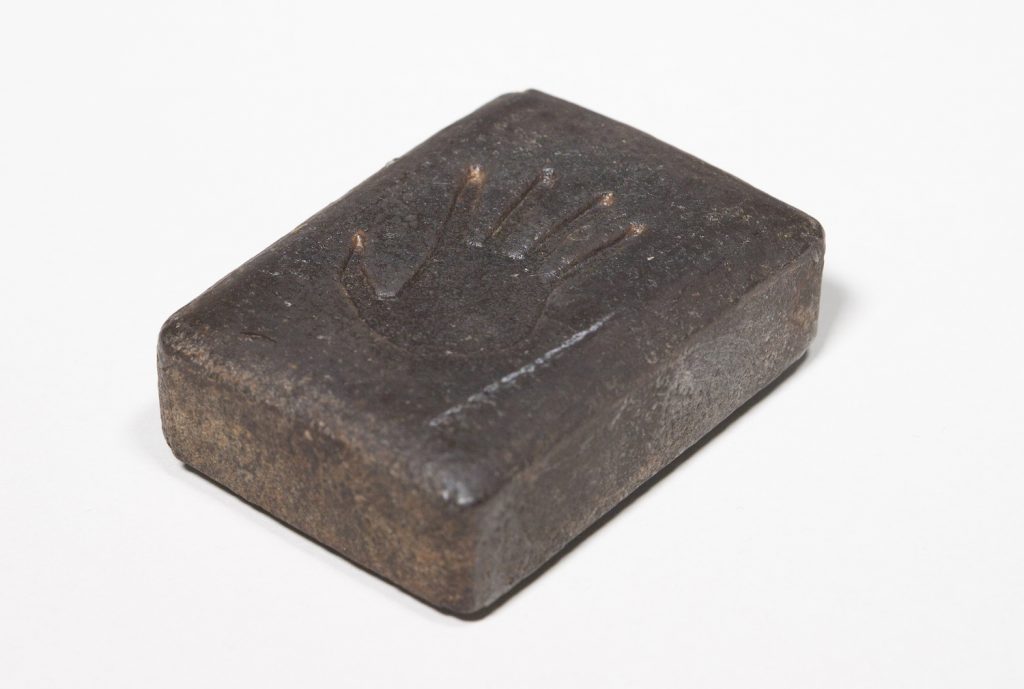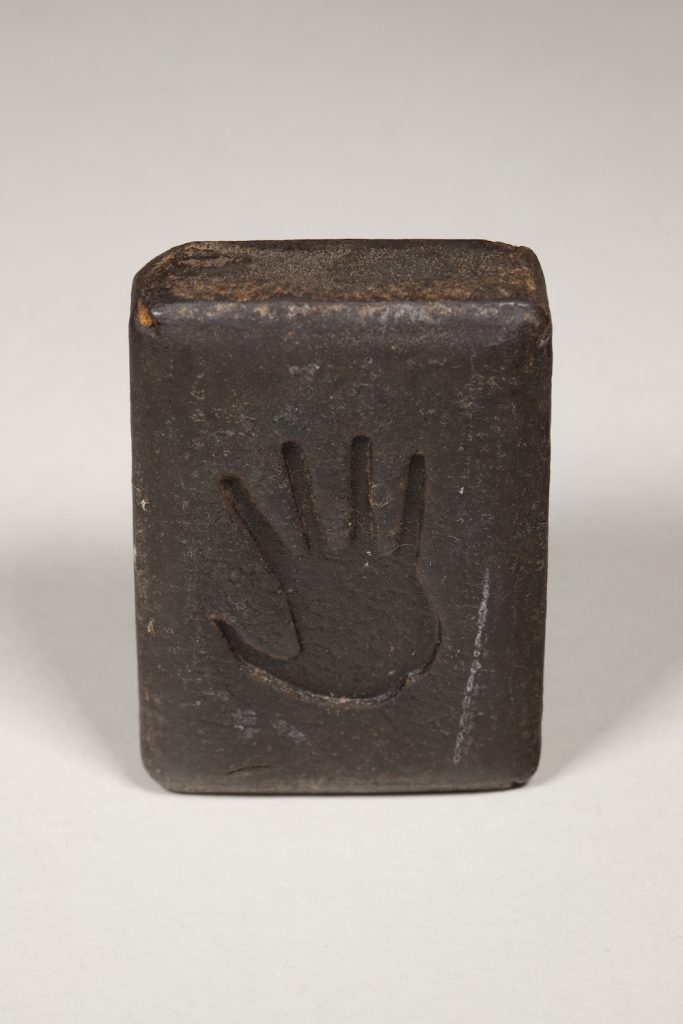Black Hand – soap from the pulp mill
Industrial firms had an aspiration for efficient use of raw materials long before it became an eco-friendly act. Launched in 1914, the Mänttä pulp mill also produced items for sale during its entire operation period. The items were developed from the sidestreams of the sulphite process. A by- product of pulp manufacture, Black Hand Soap has been deposited in the Serlachius Museums’ object collection.
The manufacture of Black Hand Soap began at G. A. Serlachius Company’s pulp mill in Mänttä in 1935. German Carl Leyst, a friend of German-borne Burghard Vitzthum who worked at Serlachius Company, had developed the manufacturing process during the first World War. The process utilised the acidic residual lyes from the manufacture of wood pulp. In Finland, G. A. Serlachius Company had the exclusive licence to manufacture Black Hand Soap along with an export licence.
“Most efficient soap in the world”, Black Hand was marketed especially for its capacity to clean. Its name is also suggesting this: the soap could clean even the dirtiest hands. Moreover, it could remove odours efficiently. The soap worked in salt-water and cold-water dissolving fat well. The product had found several applications in German Navy and also in Finnish coastal fleet tested it for cleaning painted, enamelled and wood surfaces as well as in washing the protective covers. It proved to be efficient and more easily rinseable than tall oil soap. The soap softened however too quickly which increased its consumption and proved costly.
Because Black Hand Soap was made of residual lyes of sulphite pulp, it contained sulphur dioxide which was believed to have healing properties. Carl Leyst, the developer of the soap had a strong faith in the health effects of his invention: it could alleviate rash, herpes, syphilis ulcers and bad smelling perspiration of tuberculosis patients, among other things. Regardless of its efficacy, it was well suited for personal hygiene of men and women. Furthermore, as it was a solution it could also be used as a mouth wash. People had even reported it having cured sleeplessness as well as scab of a pet dog. Its medicinal affects were, however, were not based on scientific information so they could not be used in marketing. Nonetheless, Black Hand was peddled also for hospital use.
The product was marketed also abroad already at an early stage. In order to evaluate its demand in the neighbouring country, the product was supposed to be presented during the Finland Week in Stockholm in April 1936. The United States market was also researched. However, the price of the product proved to be a problem: Palmolive Soap was sold in shops for the price of 10 cents per three bars which was about Fmk 4,60 in Finnish currency. In Finland, one Black Hand bar cost Fmk 3,00 which seemed to be over the top even for the domestic clientele.
In addition, the colour of the Black Hand complicated the sales: dark soap left black stripes on the surface of the sink. This was obviously aggravated by the soap’s soft consistency. In Germany, though, a method of bleaching the residual lyes had been invented in 1936 which Serlachius company never implemented. Due to its soft consistency, the soap was not particularly economical which also affected its sale during rationing. As a result, it was decided to stop its manufacture. “Nobody will use their permit card to buy Black Hand Soap since its sales was rationed with a card” states a letter to the Ministry for Health, Welfare and Social Security. Serlachius Company wrote the letter to apply for a right to sell out its stock of soap without the card. The right was not granted but in Helsinki, Tampere and Turku workers of metal industry who were entitled to buy an additional dose could purchase Black Hand Soap a little more than the usual one.
The manufacture of Black Hand Soap lasted five years in Mänttä and remains merely one of the curiosities of sulphite pulp production, whereas Finnish invention, tall oil soap, is renowned to all. Its manufacture began as a by-product of sulphate pulp in Kotka in 1930s.
Milla Sinivuori-Hakanen
Curator
Sources:
G. A. Serlachius Oy, Head Office’s archive, ELKA, Central Archives for Finnish Business Records
B. Vitzthum’s documents
Products that are no longer manufactured
Gösta Serlachius correnspondence, Serlachius Museums
Fabian Langenskiöld
R. Erik Serlachius
Georg von Wendt



